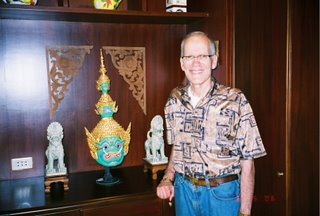Pianist Albert Tiu plays Music at an Exhibition
National Museum of
Singapore. August 16, 2013. In conjunction with its splendid exhibition, Princely Treasures from the House of
Liechtenstein, the museum is presenting a series of six musical evenings of
classical music, programs with tie-ins to the exhibition itself. For the first of these programs, Philippine
pianist Albert Tiu, who is now living in Singapore, adopted the theme of the
“grand tour,” which used to be made by very rich young men, who traveled to
many parts of Europe, but mainly Italy, as part of their cultural upbringing. Because the exhibit itself is largely of
Baroque art, Tiu’s musical grand tour was also largely from the Baroque period,
giving us Sweelinck, Bach, Couperin, Scarlatti, Clementi, Mozart and Haydn.
 |
| Pianist Albert Tiu |
A “theme” recital program like this, presents a lot of
problems in appealing to a general audience, many members of which might not
want to spend an entire evening listening to the music of one period. But by a smart choice of short works of varying
moods and intensity, and from seven composers, Tiu kept things moving forward
under the watchful eyes of several large portraits from the Liechtenstein
collection, which were hanging in the gallery which was turned into the recital
venue. I, for instance, was stared at
(and I stared back) by Anthony van Dyck’s portrait (c. 1626) of a severe, but
regal, German nobleman.
Tiu is a solid pianist, one who is good enough to bring his
own interpretations and approaches to the music he plays. I particularly liked his playing of the two
fantasias on the program, one by Mozart and the other by Haydn. In each work he departed from the usual
literal way these pieces are played by pianists who want to get an “authentic”
Mozart or Haydn classical sound, and emphasized the fantasy mood that the
titles implied, injecting some mystery and, if you will, romanticism into the
performance. It was an interpretation I
enjoyed hearing, one that was perfectly in character with the music. I also liked hearing Sweelinck played on the
piano. I am quite familiar with
Sweelinck’s music on the pipe organ, but this was the first time I’ve heard a work
of this great early-Baroque Dutch composer played on the piano. I’d like to hear more because of the clarity
and articulation the piano gives to his music (no reverberation of sound bouncing
all over the walls of ancient cathedrals).
The rest of the program was equally well-performed, except that Tiu’s
Scarlatti could use a little more work.
It may have been that Scarlatti recordings by Pletnev, Sudbin and a few
others, have set such a high standard of technical virtuosity, that anything even
slightly less, although good, doesn’t quite do the trick.




0 Comments:
Post a Comment
<< Home